by Louise Irvine
August 12 is World Elephant Day, and we are celebrating these magnificent animals in ceramic art. We are inspired by the Great Migration Project, which recently arrived in Newport, Rhode Island, and will travel via New York to Miami Beach, Florida, in December. The Coexistence Collective of contemporary artists and Indian artisans has created 100 monumental elephants in wood to raise millions of dollars for powering human-wildlife harmony. At WMODA, we are curating a new exhibition featuring 100 elephants from the museum’s collection.
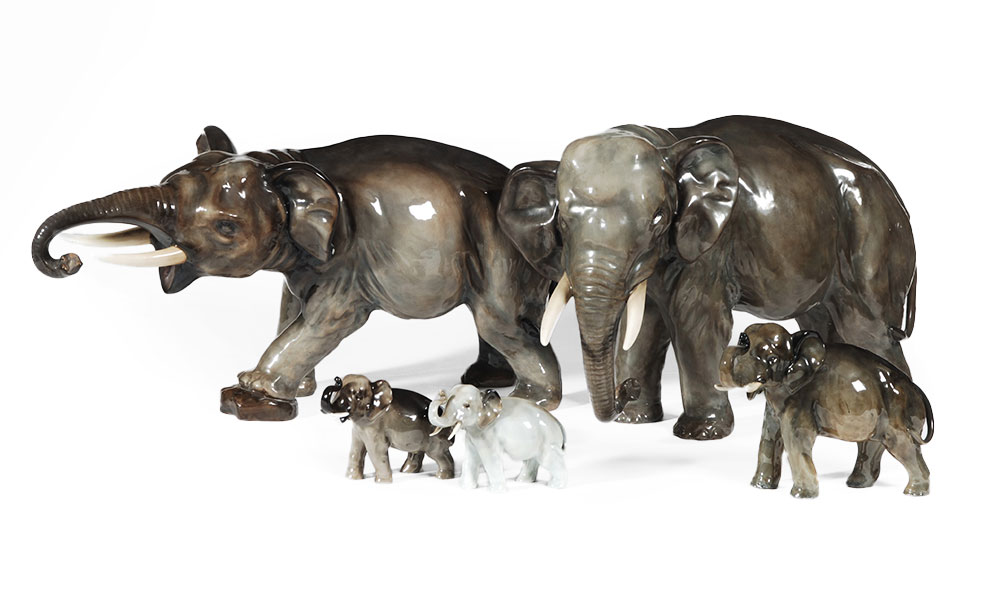
Royal Doulton Elephants by C. J. Noke
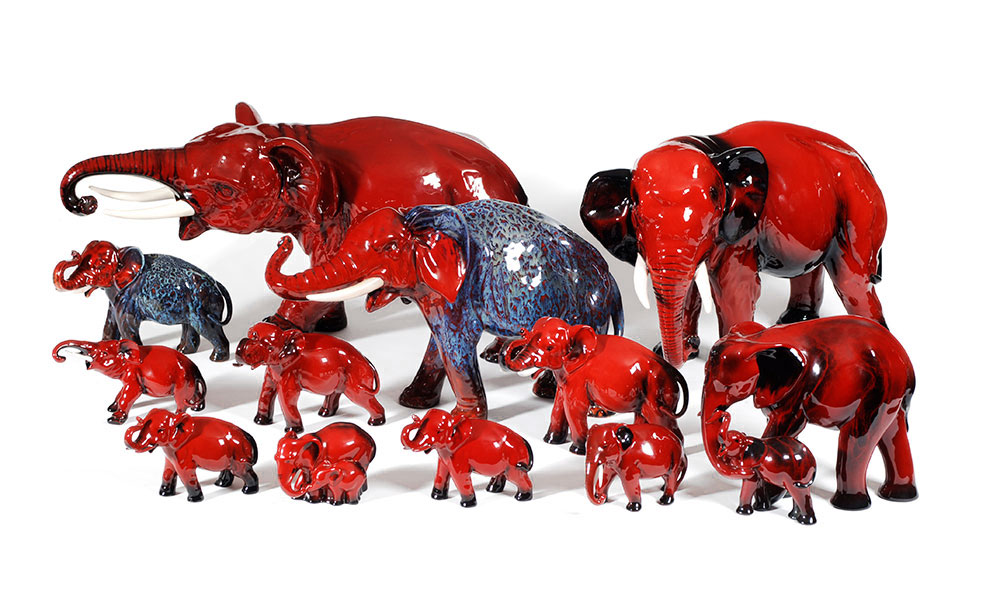
Royal Doulton Herd of Flambe Elephants
When African and Asian elephants first appeared in the West, they aroused immense curiosity. Soon, they were taught tricks to entertain crowds at traveling menageries and circuses. Today, we are more mindful of the damage done to wild animals in captivity and prefer to capture them with our cameras and admire them in art.
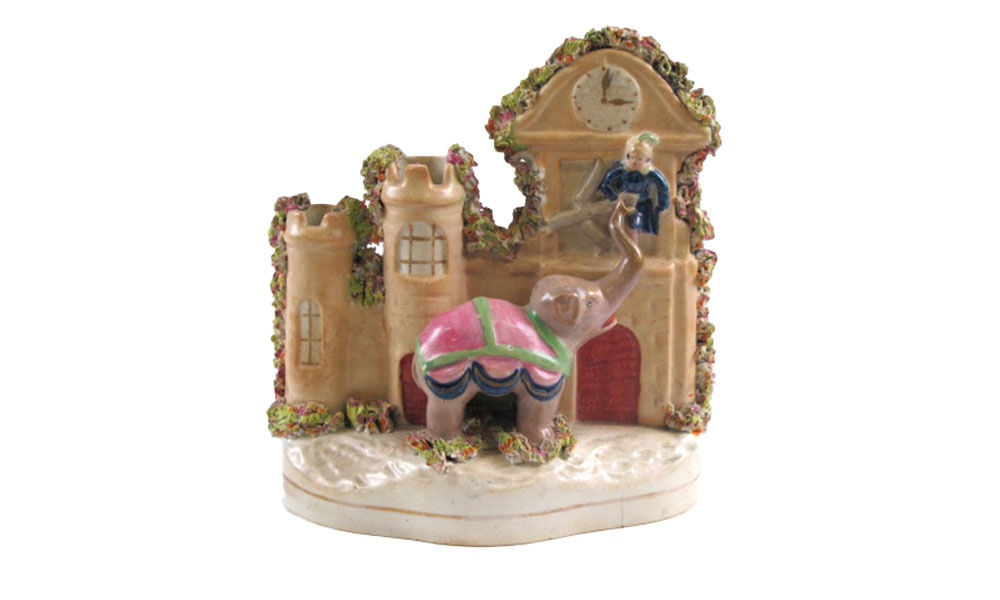
Staffordshire Elephant of Siam
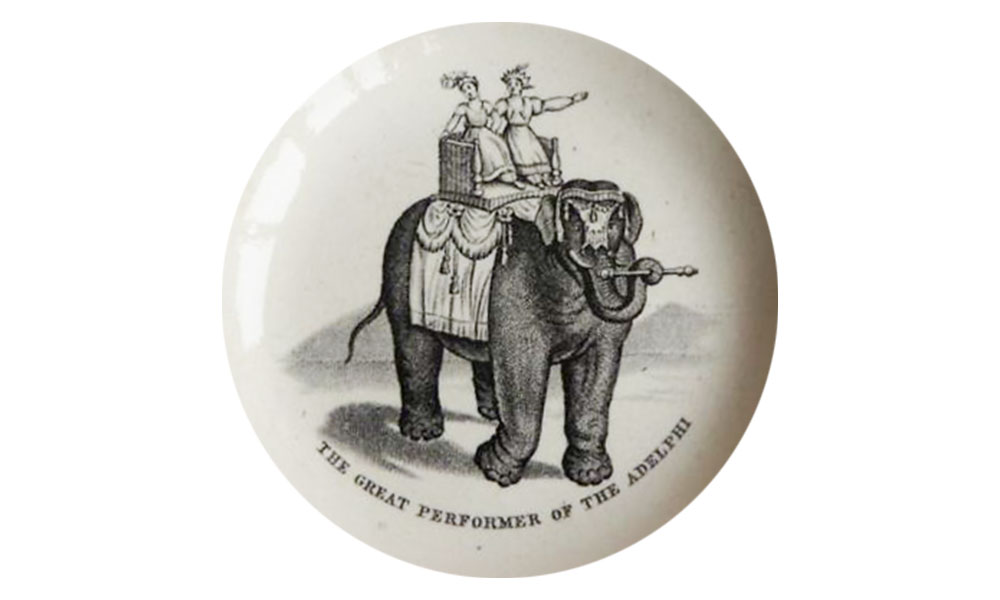
Staffordshire D'Jeck Plate Detail
The earliest elephant in the WMODA collection is a Staffordshire figure inspired by Mademoiselle D’Jeck. The celebrated elephant was brought from Paris in 1829 to perform at London’s Adelphi Theatre in a play entitled The Elephant of Siam and the Fire Fiend. The elephant’s tricks included dancing and bowing for a curtain call, and they were so well received that the walls of the theater shook from the thunderous applause. Souvenirs of D’Jeck’s remarkable performance included a paper peep show, which is in the collection of the Victoria and Albert Museum in London. The Staffordshire potters also made souvenirs, including a printed plate and a flatback figure of D’Jeck rescuing the hero of the play. After her London performances, D’Jeck toured England before traveling to New York in 1831 for an impressive three-week show at the Bowery Theatre.
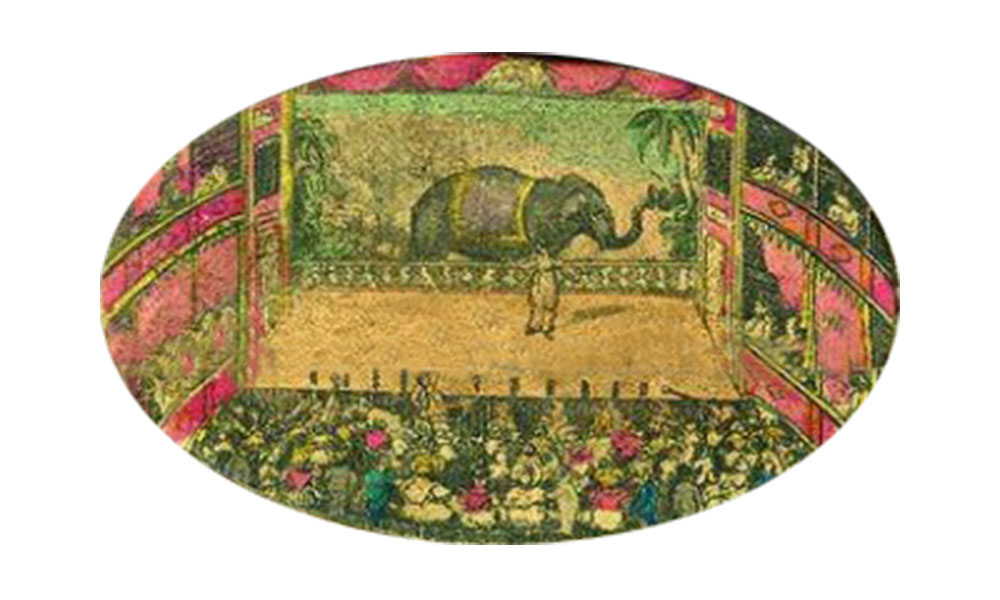
Elephant of Siam Peep Show Detail V & A Museum
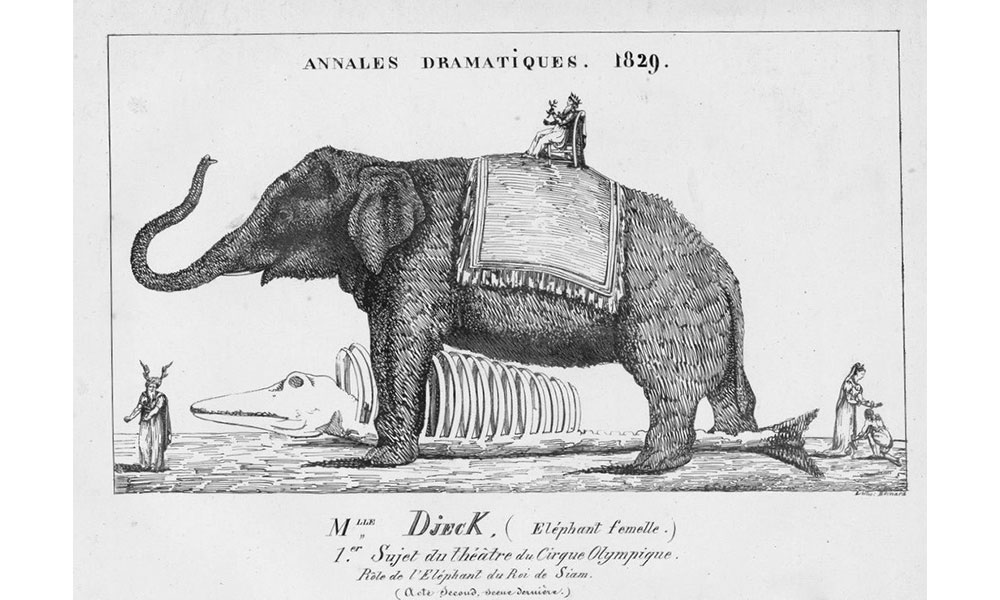
Mademoiselle D'Jeck in Paris
Jumbo, a giant African bush elephant, was the most famous animal in the world during the 19th century. He was captured as an orphan in Sudan and spent four years in a zoo in Paris before being traded for a rhino and a kangaroo with London’s Regents Park Zoo in 1865. Jumbo means “hello” in Swahili, and the name soon coined a new English word for extra-large size. For 17 years, Jumbo was the most popular attraction at the London Zoo and was renowned for giving rides to thousands of children, including a young Winston Churchill, Theodore Roosevelt and Queen Victoria’s children.
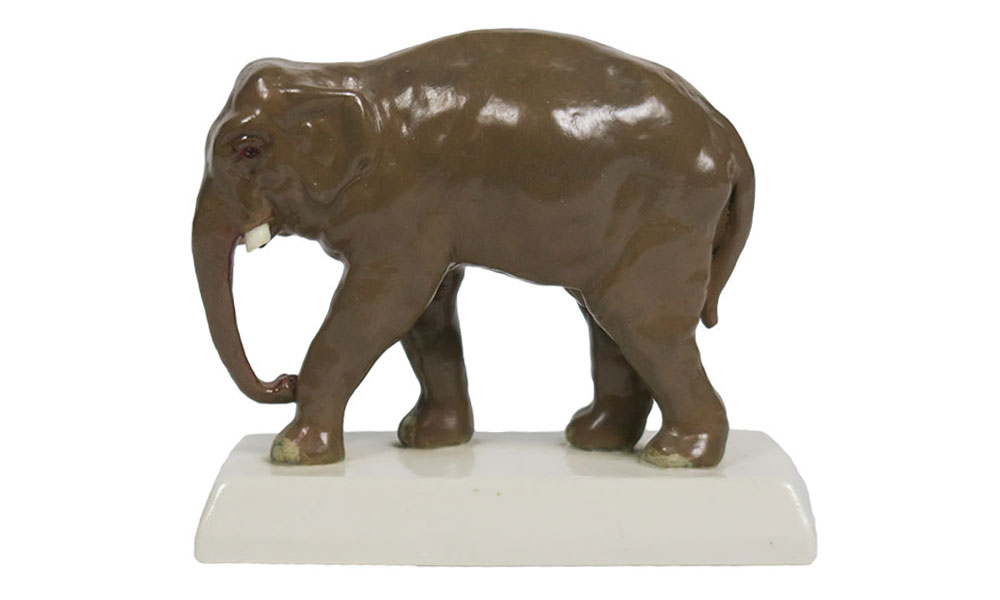
Copeland Jumbo 1882
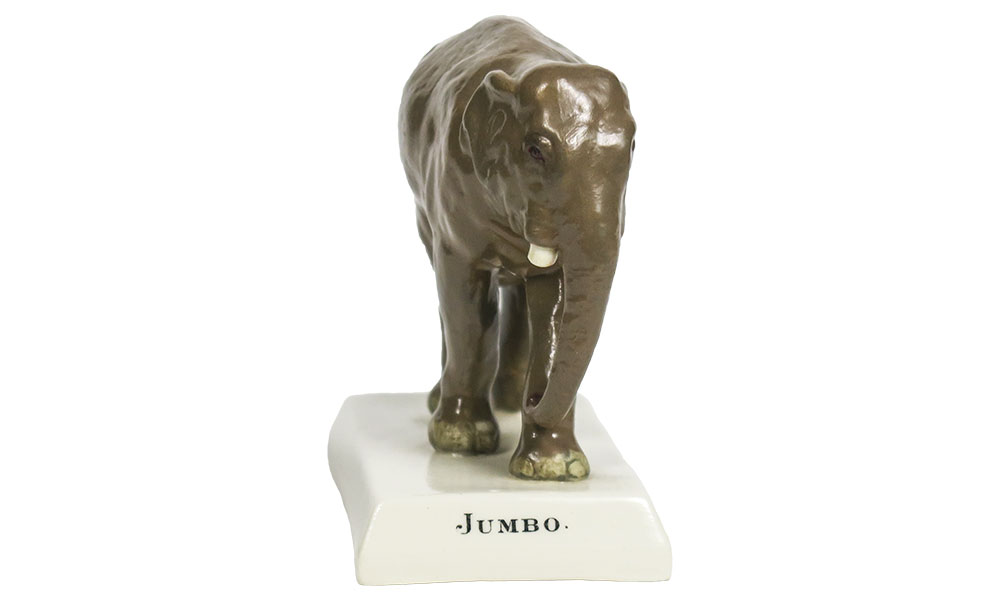
Copeland Jumbo 1882
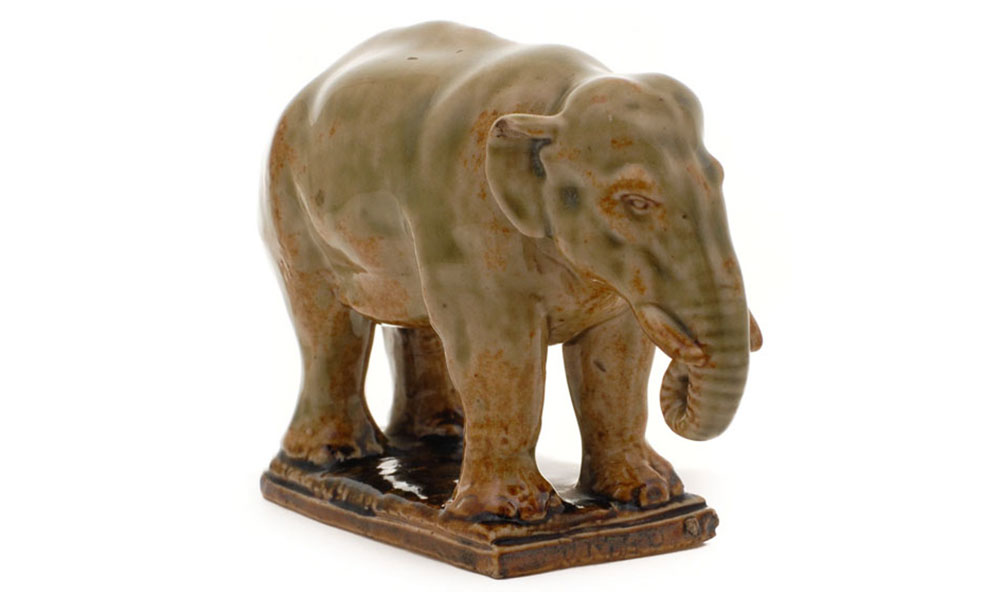
Doulton Jumbo by G.Tinworth
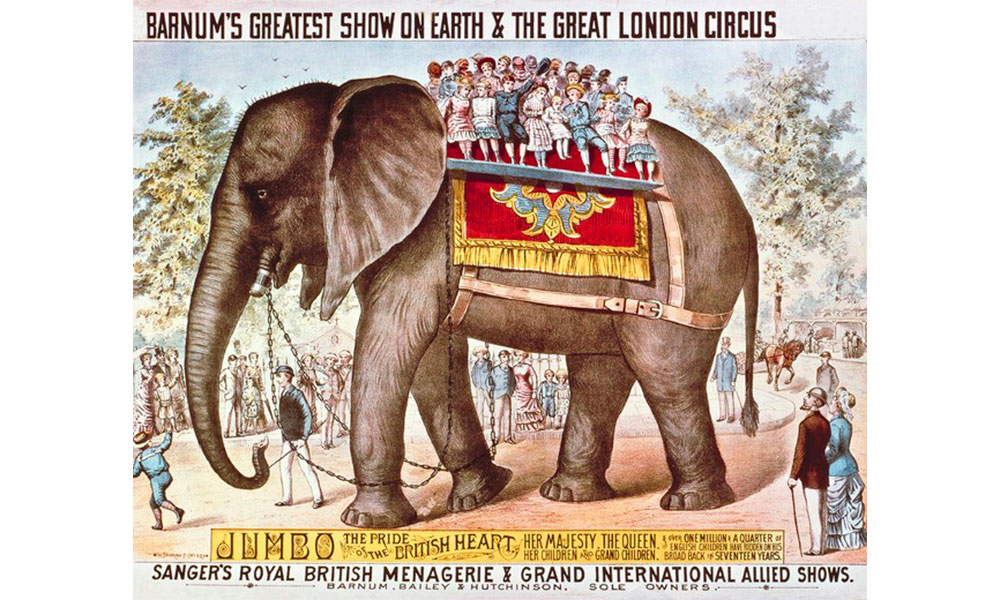
Barnum's Greatest Show on Earth with Jumbo
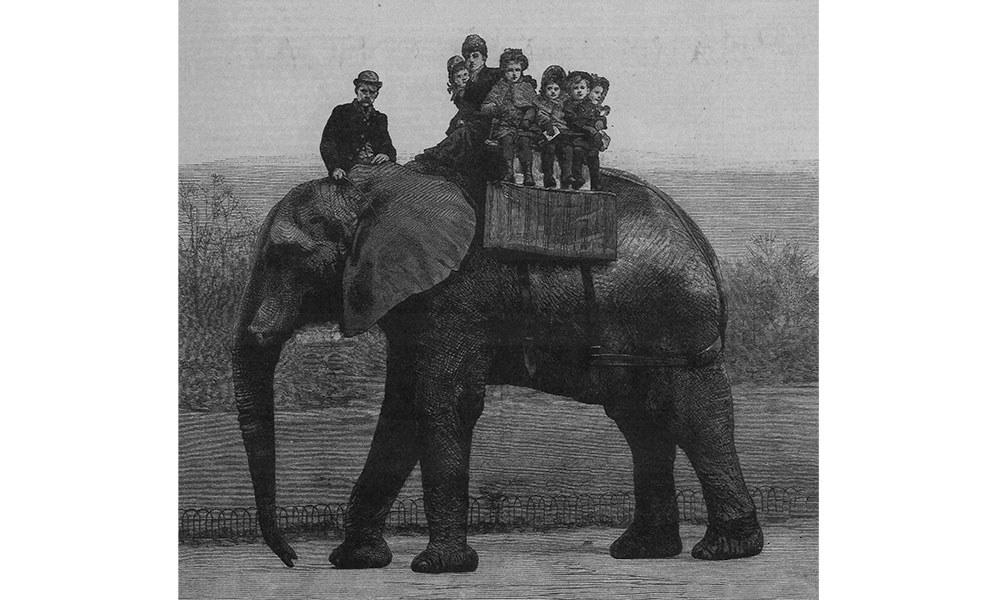
Jumbo Illustrated London News 1882
There was a public outcry in the British media when P. T. Barnum, the famous circus impresario, proposed taking Jumbo to America to star in the “Greatest Show on Earth.” Barnum’s circus already had 20 Asian elephants, but he wanted an African elephant, the biggest land animal in the world. 100,000 schoolchildren wrote letters to Queen Victoria begging her to stop the deal. However, Jumbo was sold and was greeted upon his arrival in New York by vast crowds who cheered as his crate was drawn up Broadway. Jumbo was exhibited in New York’s Madison Square Garden in 1882, where he earned enough to recoup his investment in just three weeks. He then toured with Barnum & Bailey’s Circus until 1885, when he was struck and killed by a train in Canada.
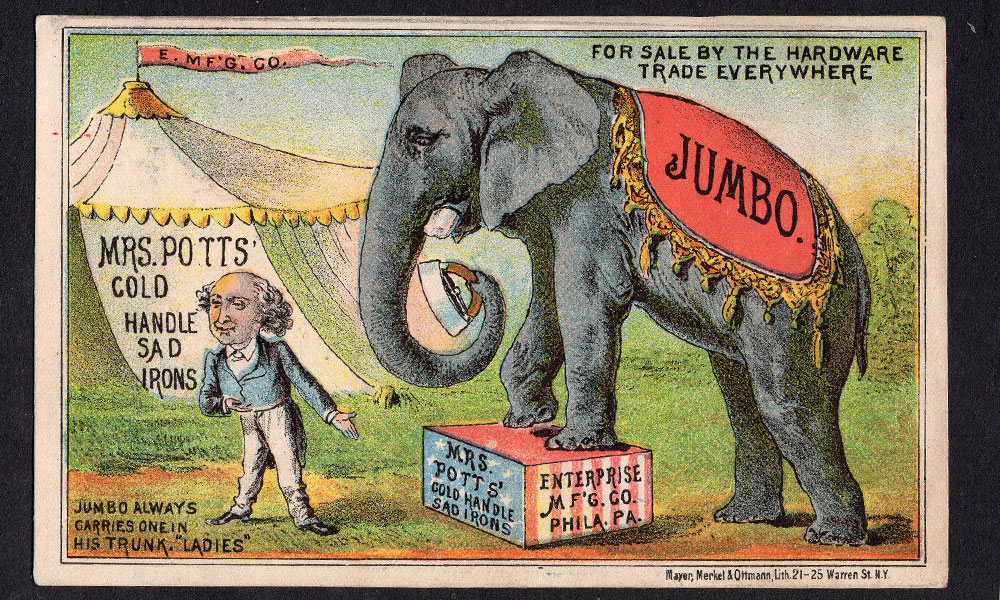
Jumbo Trade Card
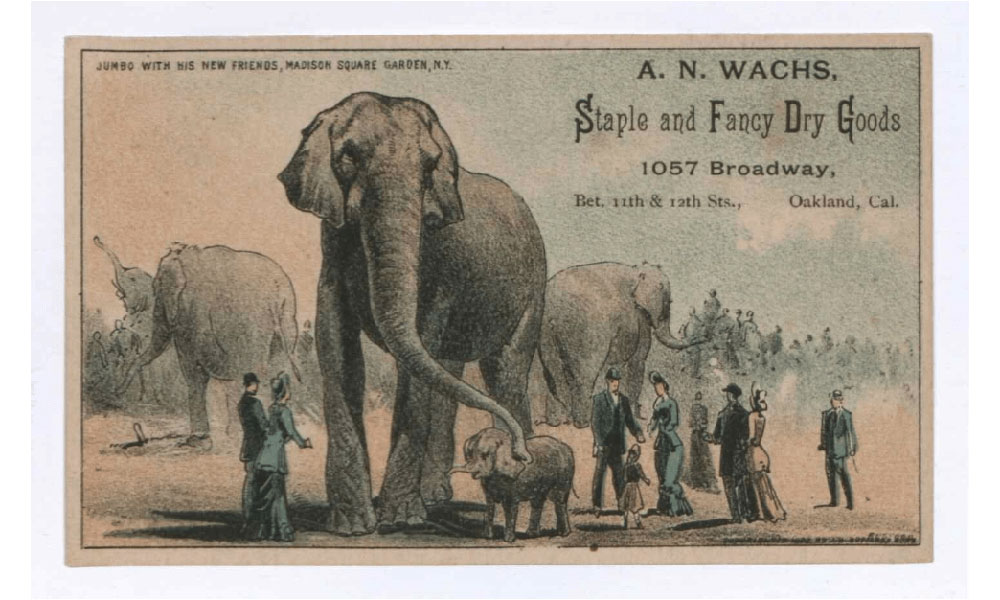
Jumbo Trade Card
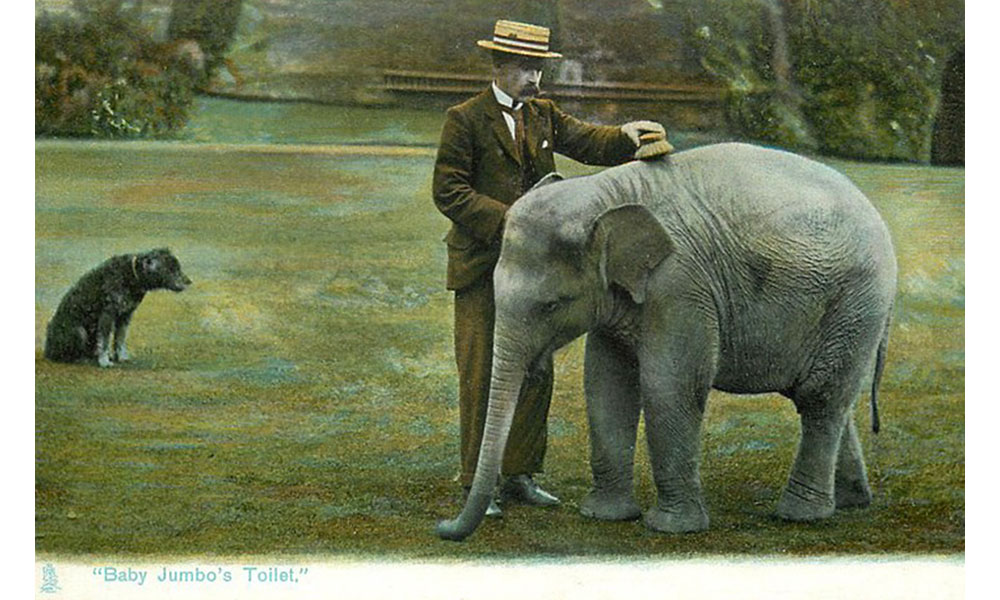
Tuck Postcard of Baby Jumbo's Toilet
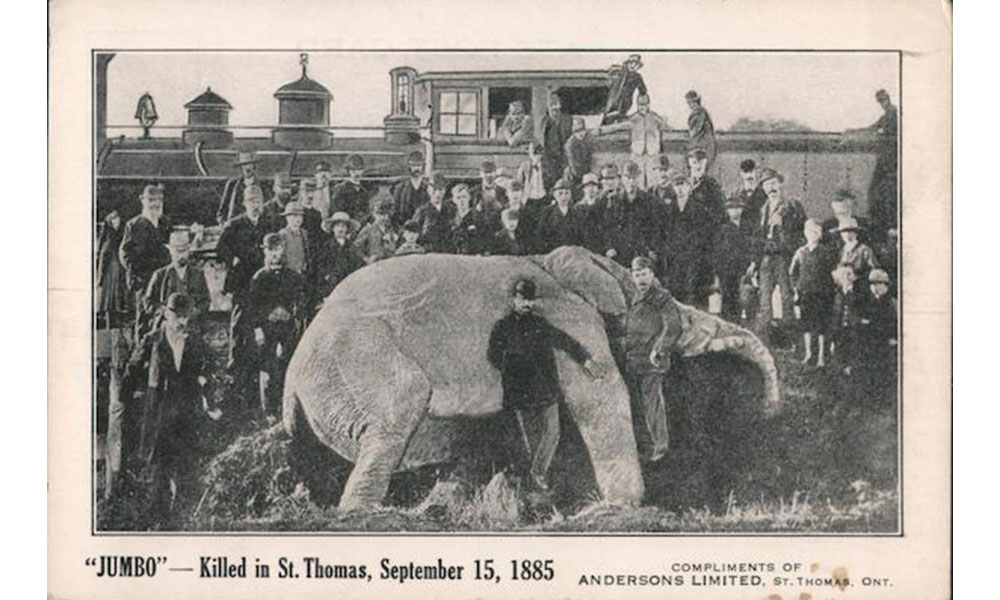
Postcard of Jumbo Killed
Jumbomania inspired British potteries to model the beloved elephant in many different ceramic bodies. In 1882, the Copeland factory produced a model of Jumbo, which can be seen at WMODA. Doulton’s first artist, George Tinworth, produced a small stoneware figure named Jumbo, which we would love to find for the collection. Charles Noke, who became the Art Director of Doulton’s Burslem Studio, was particularly inspired by elephants. Born in 1858, he grew up with stories of Jumbo, and he would have seen circus elephants when they visited his hometown of Worcester. During the school holidays, Noke roamed the Royal Worcester porcelain factory watching the artists at work. James Hadley, their chief modeler, gave him clay to explore his capabilities, and he modeled small elephants. Perhaps he was influenced by Hadley’s model of an elephant, which was produced in many different glaze effects from 1869.
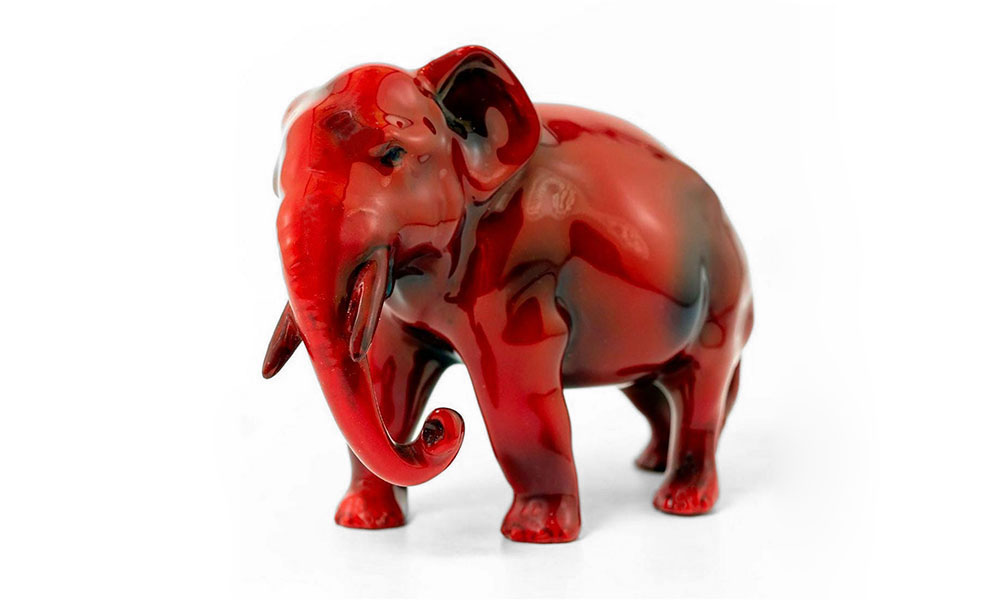
Royal Doulton Flambe Elephant by C. J. Noke
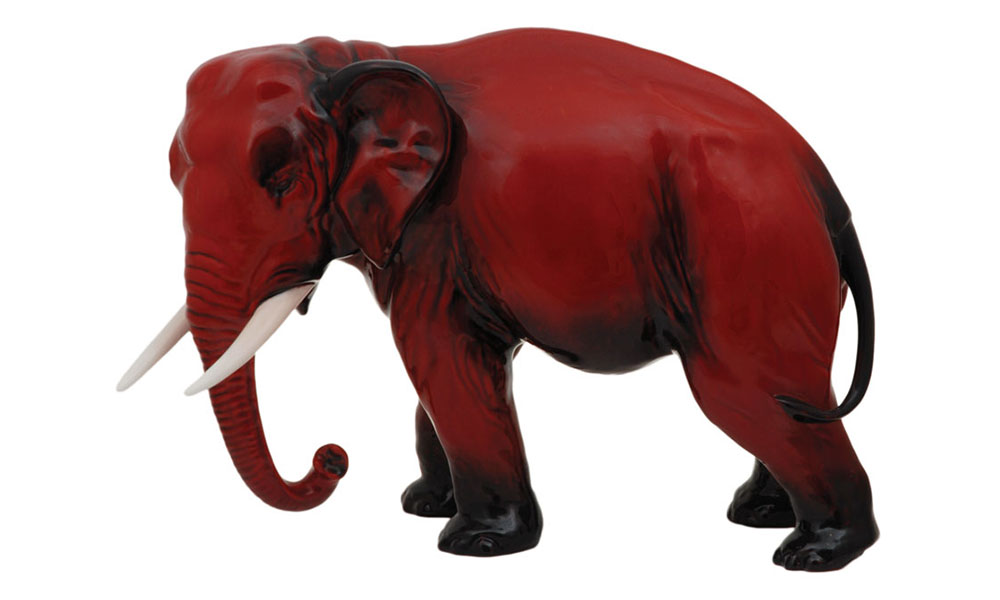
Royal Doulton Flambe Elephant by C. J. Noke
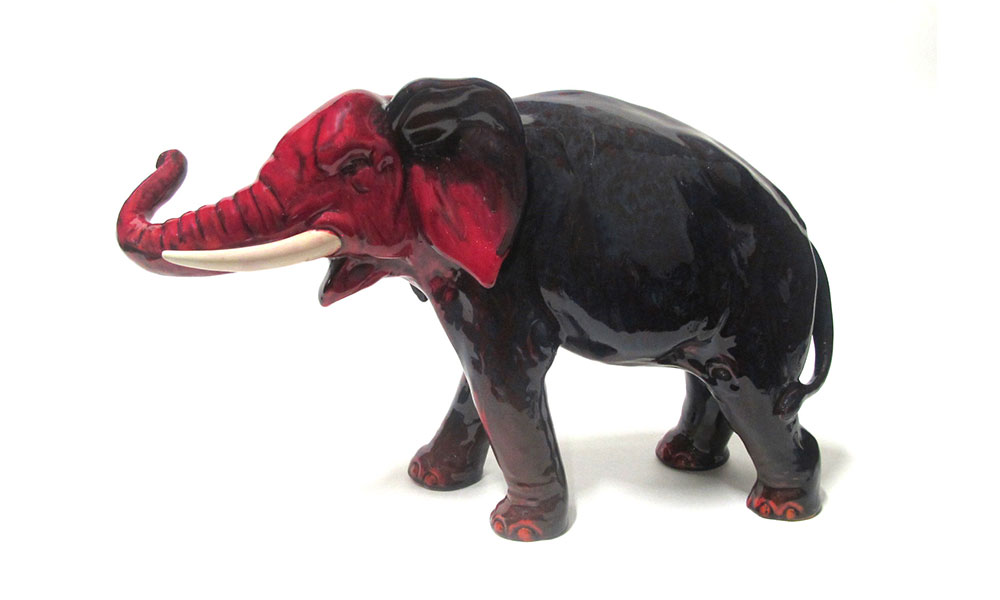
Royal Doulton Flambe Elephant by C. J. Noke
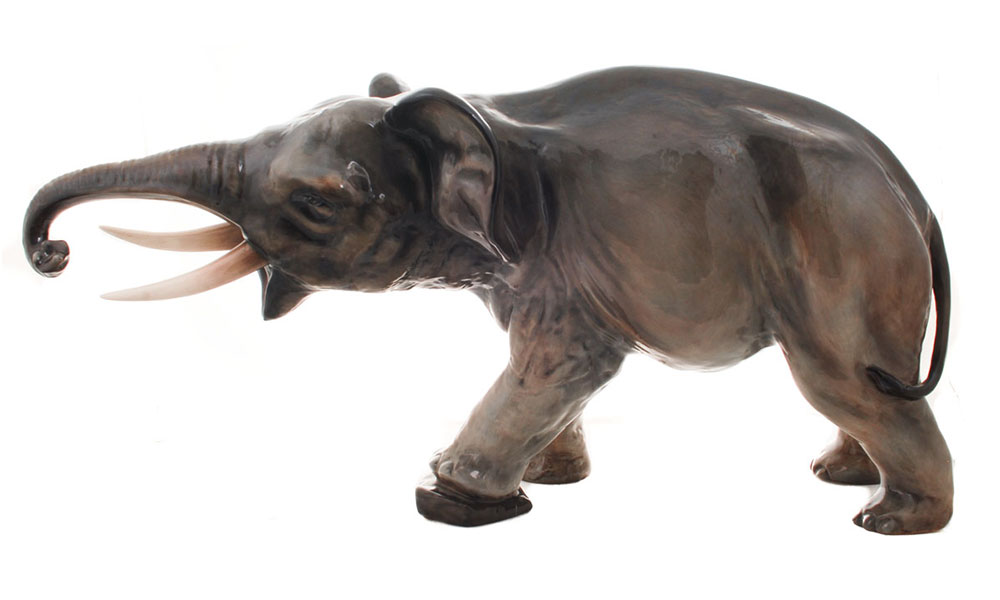
Royal Doulton Fighter Elephant by C. J. Noke
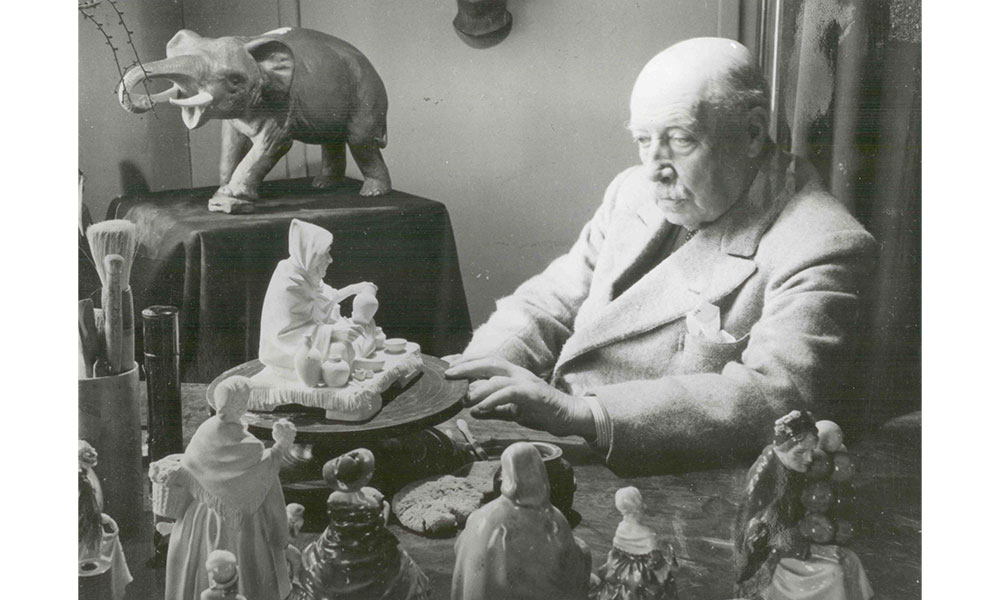
Charles J. Noke
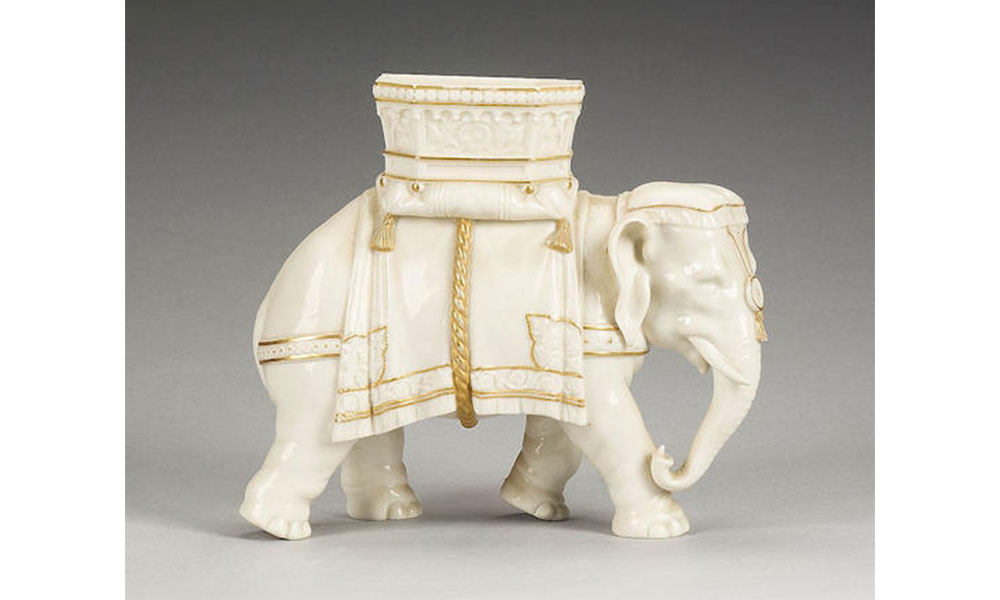
Royal Worcester Elephant by J. Hadley
At the age of 15, Charles Noke was apprenticed as a modeler at the Worcester factory, where he worked for 16 years before joining Doulton’s Burslem factory in Staffordshire in 1889. He modeled a variety of elephants for Royal Doulton, and he was obviously very proud of his sculptures as they were featured in his publicity photographs during the 1930s. The elephants were produced in various sizes ranging from 4 to 13 inches and decorated in naturalistic colors and the flambé glazes that Noke perfected in 1904. They sold so well that production of some models continued long after his death.
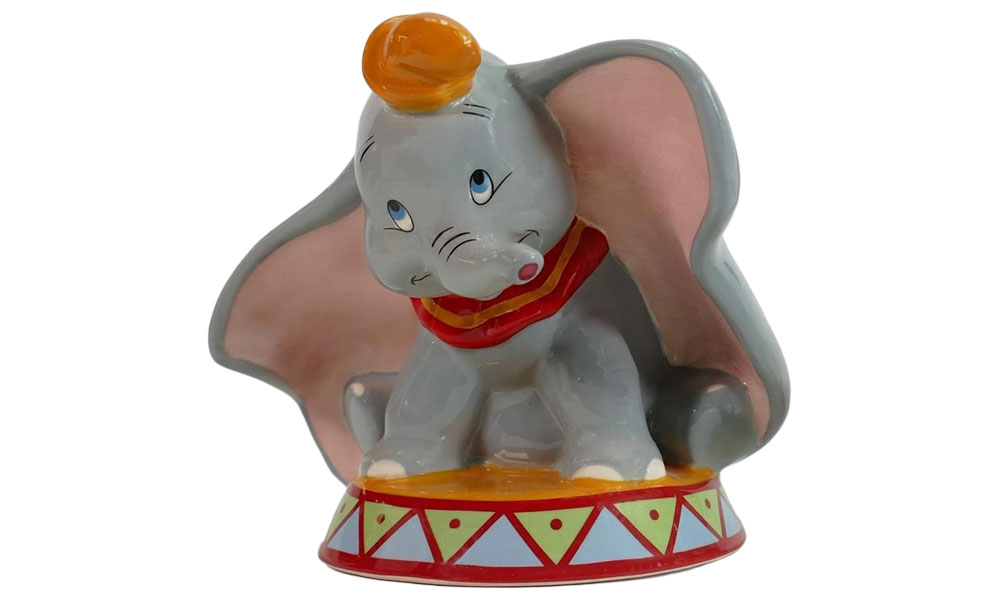
Royal Doulton Dumbo
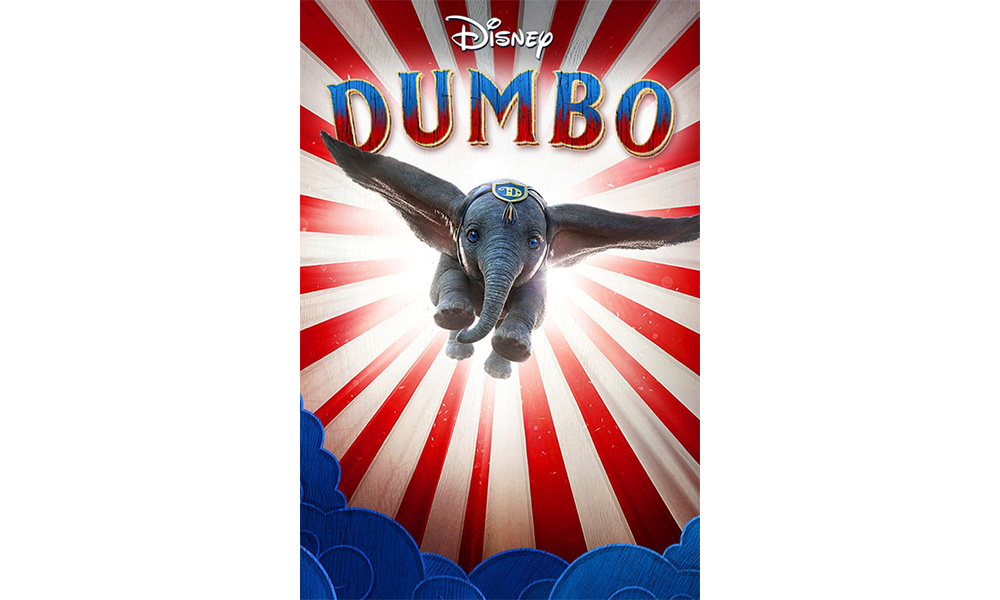
Disney's Dumbo Poster
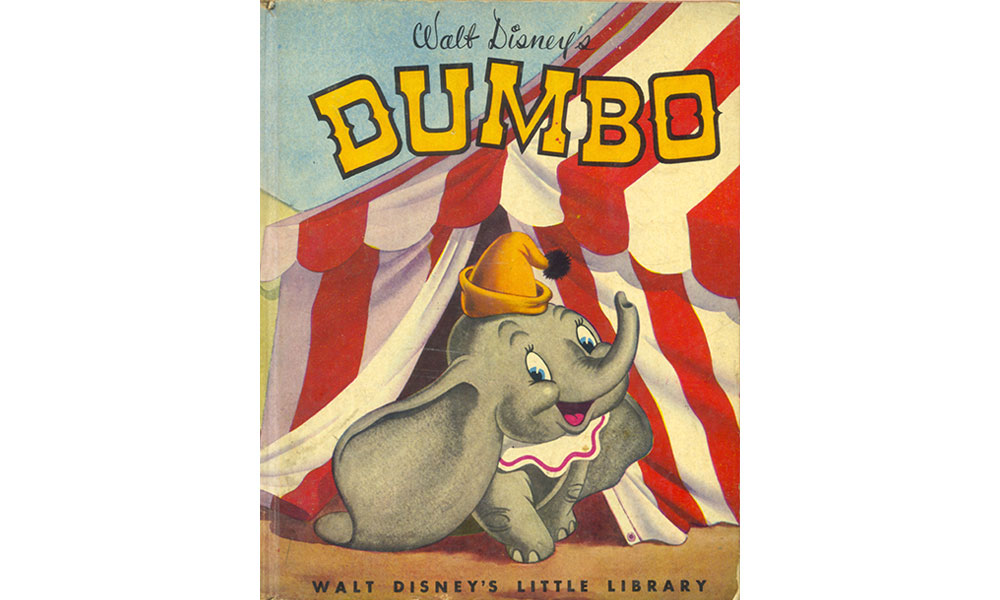
Disney's Dumbo Book
Noke also specialized in anthropomorphic animals and modeled some little elephants in the 1920s. The best-known character elephant at that time was Edward Trunk, a friend of Rupert Bear, who starred in a comic strip in the Daily Express newspaper. Since 1920, these cartoon characters have been part of children’s culture in the UK and were produced as Royal Doulton figures in the 1980s. The most famous cartoon elephant of all time is Dumbo, which Royal Doulton introduced to their Disney Showcase collection in 1998. The story of Dumbo is loosely based on Jumbo’s circus life and was written by Helen Aberson and Harold Pearl. Disney acquired the rights to the story and created an animated musical film about a baby circus elephant who is ridiculed as a sideshow freak for his huge ears until he steals the show by learning to fly. His flight to stardom is assisted by his friend Timothy Mouse, who parodies the fabled animosity between tiny mice and massive elephants.
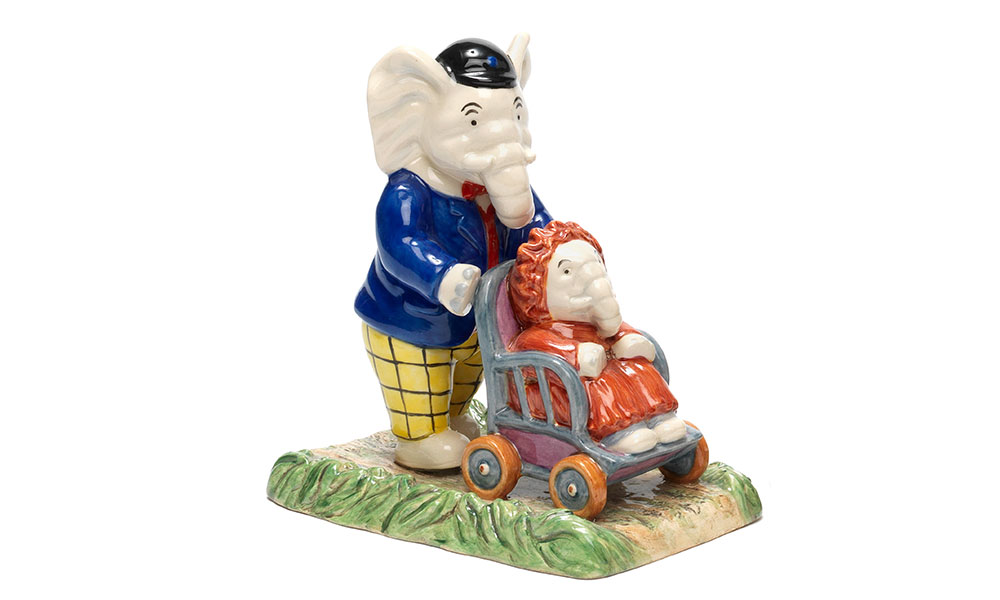
Royal Doulton Edward Trunk and Pompey Prototype
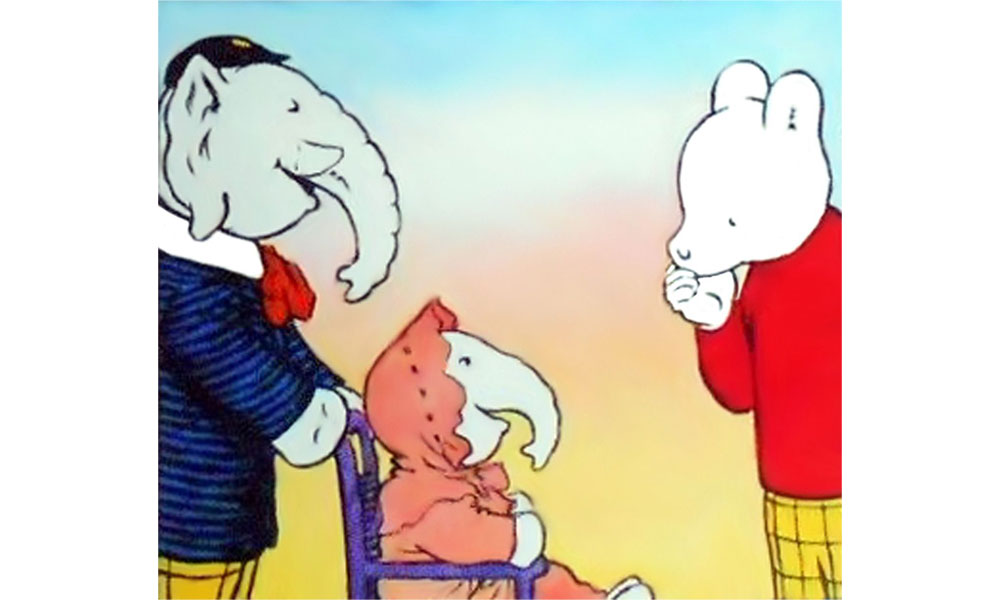
Rupert Bear with Edward Trunk and Pompey
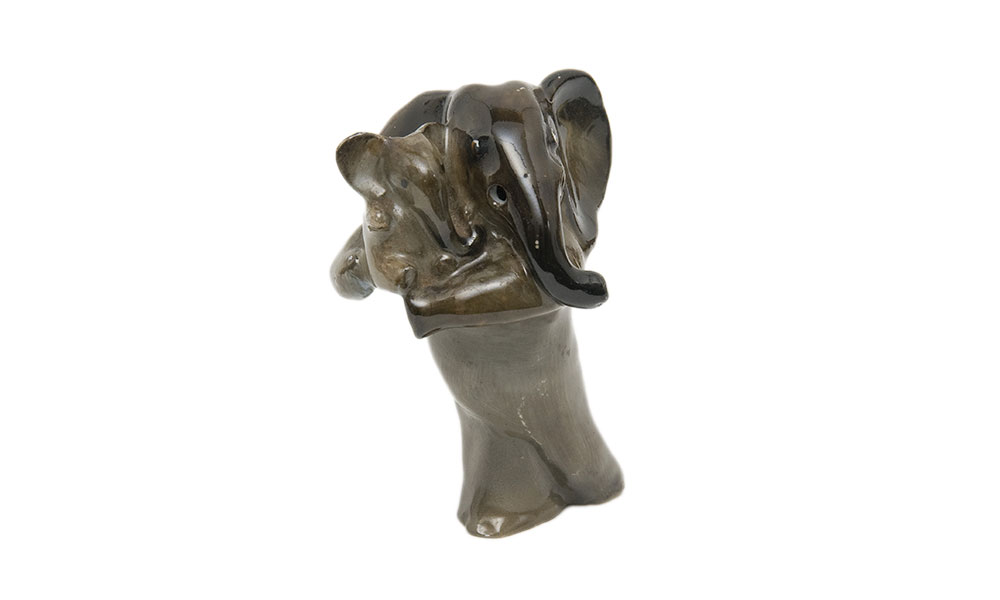
Royal Doulton Mother and Baby Elephant by C. J. Noke
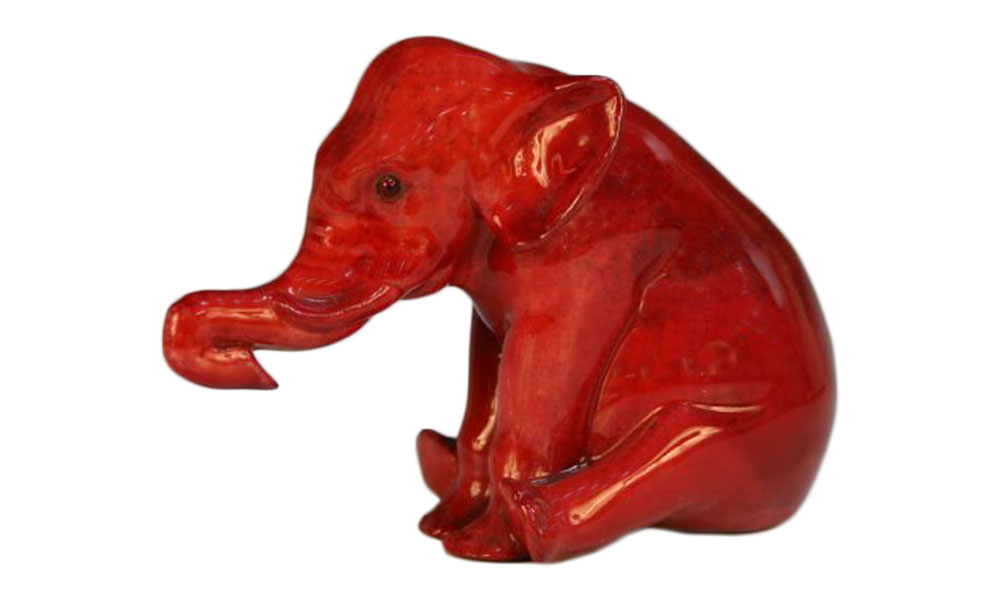
Bernard Moore Baby Elephant
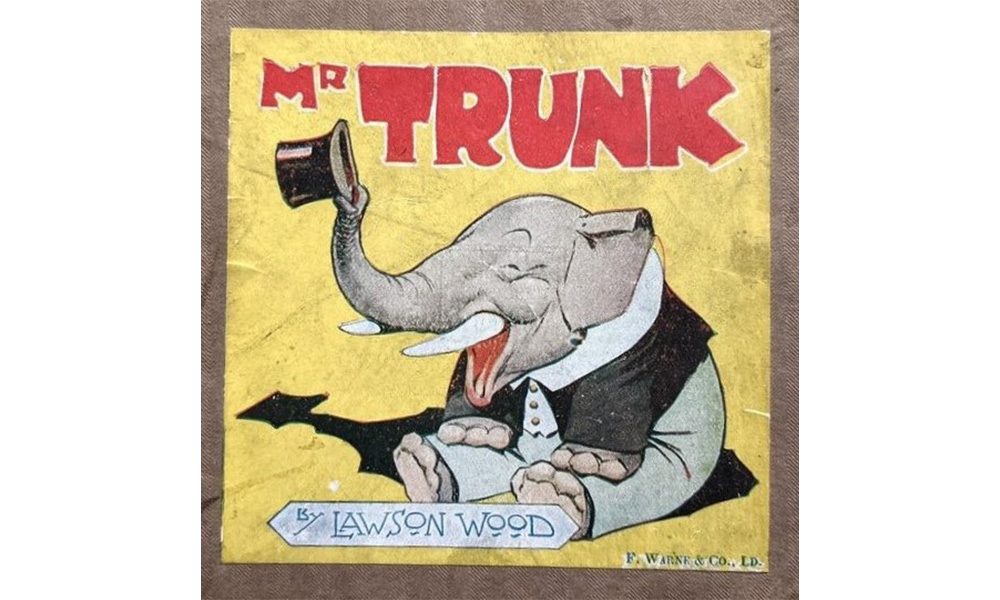
Mr. Trunk by Lawson Wood
One of the most incredible animated sequences occurs when Dumbo and Timothy inadvertently drink water spiked with champagne and hallucinate pink elephants. The pink elephant parade is a comical interpretation of the expression for intoxication, “seeing pink elephants.” The huge success of the Dumbo movie, which was released in 1941, made up for Disney’s serious losses from Fantasia and put the studio back on a firm financial footing. Dumbo is still enjoyed today in Disney theme parks, where the aerial carousel ride is one of the oldest attractions dating back to 1955. The story of Dumbo was reprised in Tim Burton’s 2019 live-action adventure where “differences are celebrated, family is cherished and dreams take flight.”
See our amazing collection of pachyderms in pottery when WMODA reopens.
